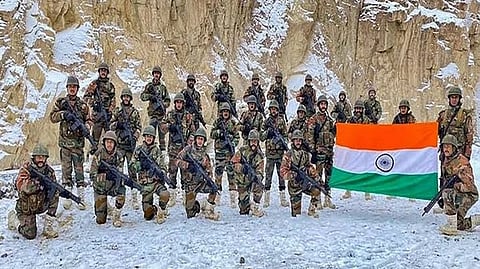

NEW DELHI: More than two weeks have passed since Prime Minister Narendra Modi announced the Agnipath scheme, a four-year service in the Indian Armed Forces. The storm that erupted in wake of the announcement, triggered by disgruntled defence aspirants and opposition parties resulting in at least a couple of deaths and a substantial loss of public property, appears to have withered for now with Army, Navy and Air Force all set to begin enrolment of Agniveers from the first week of July.
Aimed at bringing down the average age of soldiers in the Indian Armed Forces and making the force more tech-savvy, the scheme also intends to cut down costs in terms of pension and salaries, which constitute a major chunk of the annual expenses. The Agnipath Scheme is also expected to produce a pool of trained personnel to boost national security in times of external threats, internal threats and natural disasters.
A total of 46,000 candidates are to be recruited in the first batch who would be paid a customised salary package of Rs. 30,000 (Rs. 21,000 in hand) for first year, Rs. 33,0000 (Rs. 23,100) for second year, Rs. 36,500 (Rs. 25,580) for third year and Rs. 40,000 (Rs. 28,000) for fourth year. The sum deducted from monthly salary would be put into a Corpus Fund amounting to Rs. 5.02 lakh at the end of the term. The government would also contribute another Rs. 5.02 lakh during the period and each soldier, upon end of duty, would get Rs. 11.71 lakh as ‘Seva Nidhi’ package.
In a country where securing a job in the Defence services is considered a dream career among generations of middle and lower-middle income youth both from rural and urban parts who train for several years to clear the tests, the short service scheme with no long-term benefits came as a rude shocker which naturally spilled to the streets.
A slew of confidence building measures has been announced since to assuage some of the concerns even if not the defence aspirant’s fears entirely. Immediately after the scheme was announced, the upper age limit was increased to 23 as there had been no army recruitment over the past two years due to the COVID-19 pandemic. Subsequently, a 10 per cent reservation for Agniveers had been announced by the defence ministry in the Indian Coast Guard and all the 16 defence PSUs including HAL, BEL, BEML etc. The Ministry of Home Affairs has announced 10 per cent reservation in Central Armed Police Forces (CAPF) and Assam Rifles recruitment. The Shipping Ministry has also promised smooth passage for Navy Agniveers into merchant navy while a degree programme has also been planned for Agniveers even as they serve the country.
However, proof of the pudding is in the eating and young defence aspirants will have to wait for four more years to see if all the promises made to the Agniveers actually manifest in giving them a fulfilling career post Agnipath. Otherwise, the country’s leaders are likely to be staring at trained, tech-savvy soldiers on the other side of law.
Visit news.dtnext.in to explore our interactive epaper!
Download the DT Next app for more exciting features!
Click here for iOS
Click here for Android